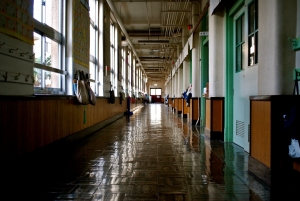Marketing
The Rise of EdTech
The essence of being a teacher doesn’t change, no matter where you work. You still have to plan lessons, imparting knowledge, mark homework, but like a lot of other industries, choosing which sector you want to be in has a profound effect on what your professional life will look like. And, like a lot of industries, there is no question of better or worse, only different.
So, what are the main differences between teaching in public and private schools?
Who do you work for?
State school is a blanket term for any school run by the government and funded by taxes. There are many variations under the blanket but they all have at least this in common. Private schools (also known as independents and, confusingly enough, public schools) are separate from the government, which means they are in charge of their own curriculum, ethos, and funding. They are usually paid for by school fees charged to parents as well as donations from alumni and other benefactors.
What do you teach?
Firstly, in state schools, you need the correct government-sanctioned qualifications to teach – these may vary from school to school but usually include a BA, an MA or a teaching certificate. Once employed by the school, teachers have to follow the national curriculum meaning there is less freedom to pick favourite topics. However, it doesn’t prohibit personalisation or individual methods, instead it’s about working within the system.
Independent schools usually require a BA or more to become a teacher but this is up to each school and their board or headteacher – some hire merely on experience, others ask for much more advanced qualifications. In terms of curriculum, there’s more scope for the teacher to choose what they focus on; however, they will often be preparing children or teenagers for the same standardised tests and exams as state school students, so that will be factored in, too.
What will you be paid?
For some teachers deciding which route to take, salary may be a deciding factor. State schools offer the benefit of being more standardised – teachers are paid by the government and are likely to compensated fairly compared to other teachers. There is also often in-built union support and a clear career trajectory that comes with incremental pay rises that correspond to experience and time spent teaching.
There is no such guarantee at a private institution, as these can choose to offer as little or as much as they wish. That being said, they have the power to offer much more than state schools in some cases, meaning that a career in the independent sector can sometimes be more lucrative for a teacher.
So, how do you choose?
For a lot of teachers, it comes down to personal values. Some may object to the independent sector on principle as a non-egalitarian option that offers a different standard of education based purely on wealth. They may perceive there to be less diversity at independent schools, and more privilege (not to mention more pushy parents), which leads them to eschew it entirely and opt to teach in state schools.
On the other hand, some may crave smaller, less oversubscribed classes and a school that offers freedom to teach their own specialised subjects without being bound to the national curriculum. There is no right answer, only an informed one – and with either choice comes the opportunity to enlighten young minds and impart knowledge to a new generation. A worthy profession, however you decide to go about it.
There is one demographic in particular that is suffering and that is white working-class boys, with three-quarters failing to “achieve the government’s benchmark [of basic vocabulary] at the age of 16.” This problem, although not getting worse, remains a serious one - and one that costs the UK £37bn a year, according to the World Literacy Foundation.
The consequences of illiteracy are far reaching, with adults less likely to find work, let alone well-paying jobs. It has also been linked to obesity, depression and even a shorter life expectancy. The example used by the National Literacy Trust (NLT) is that “a boy born in Stockton-on-Tees (which has some of the most serious literacy challenges in the country) has a life expectancy 26.1 years shorter than a boy born in north Oxford.” A shocking disparity.
Perhaps worst of all is the cycle of illiteracy that occurs when functionally illiterate adults are unable to help their children with schoolwork or read to them at home. The next generation is then put at risk - and due to the stigma that surrounds illiteracy, often neither the children or the adults will ask for help or admit to the problem. It becomes akin to a secret disability that can last a lifetime.
So, what is the solution? Early intervention is cited by some to be the key. There are charities such as Learn2Love2Read who believe that one-on-one contact with children, both toddlers and those in primary school, to help get them reading at home can bridge the gap. However, literacy experts say that even this may be too late and that intervention from birth is really what’s needed. Even before they have children potential parents should be given help to ensure that their child turns up to school ready.
Local authorities are attempting to intervene in communities where illiteracy is a real issue. According to The Guardian, “Tameside council in Greater Manchester – where 34% of children start school with below-average language and reading skills – pledged to give every newborn baby a book, plus reading tips for parents, over the next 12 months.” However, as much as breaking the cycle is important.
What can be done for adults who find themselves struggling with literacy?
Well, there are resources to improve English skills, provided by the government. Charities like, the National Literacy Trust have sections dedicated to adult literacy. Finally, if you’re a parent, ask your child’s teacher for support - there may be something they can do and at the very least they can offer advice and keep a special eye on your child. As for teachers, here is a list of tips to help encourage and develop literacy in the classroom. The perceived shame around illiteracy can often be the main thing that prohibits fixing it, so most importantly, discuss it and normalise it so those who are faced with this challenge can find the help they need.
If you’d like to have a chat about teaching opportunities, then get in touch with one of our experienced education consultants. Call 0208 5066740 or email info@urbanlearning.co.uk.
Do Pets Make Children Happier?
Like anything to do with psychology and child development, there are different schools of thought. However, a recent review of 22 studies concluded that growing up with pets is linked to “higher self-esteem, cognitive development, and social skills.” This was due to animals’ ability to “reduce stress, provide social support and companionship, and improve children’s communication skills.”
Another argument for having pets at a young age, is to teach responsibility. You can have a cat; but only if you help to clean out the litter tray. If we get a dog; you have to take him for a walk every single day. Despite inevitable overflowing litter trays and unwalked dogs, a sense of ownership and care is fostered from a young age that should stand a child in good stead.
Animals also provide a non-judgemental ear to children with confidence issues. In a study conducted in the US, children were asked to read in front of a peer, an adult, and a dog. Researchers monitored their stress levels and found that kids were most relaxed around the animal, not the humans. Pets can also offer comfort and understanding in a physical, non-verbal way that helps children calm down.
It’s not just pets; an interest in animals and their wellbeing bodes well for the planet and can even plant the seeds of a career in sustainability or conservation. From all this data and extrapolation, the answer to our initial question seems to be a resounding yes. However, data can be skewed by a number of factors that aren’t always taken into consideration, such as socioeconomic status.
The reality is that households with pets are likely to be wealthier and have a host of other socioeconomic factors on their side. One US study found that although kids with pets were happier, they were also:
- less likely to be on free school lunch programs
- less likely to be from households that moved frequently
- more likely to have parents who spoke English
- more likely to be white rather than African-American, Hispanic, or Asian
- more likely to have parents born in the United States
- more likely to live in a house rather than an apartment
- more likely to have parents who were in good health
The upshot seems to be that although pets are definitely a wonderful addition to childhood and can help with anxiety (see the rising trend in emotional support animals), there are more important things in a young person’s life. And that a stable home, attentive and healthy parents and a good education are certainly higher on the list than a furry friend.
If you’d like to have a chat about teaching opportunities, then get in touch with one of our experienced education consultants. Call 0208 5066740 or email info@urbanlearning.co.uk.
When this topic comes up, someone often throws the term “SAD” into the conversation to explain our improved or impaired moods. Seasonal Affective Disorder, or SAD as it is better known, is “a type of depression that comes and goes in a seasonal pattern”, according to the NHS. However, they also add that, “The exact cause of SAD isn't fully understood, but it's often linked to reduced exposure to sunlight during the shorter autumn and winter days.” It’s important to note the use of the word “depression” in their definition, meaning that SAD isn’t a case of happiness and, well sadness, instead it denotes something deeper.
Despite meriting a page on the official NHS website, the experts are divided as to whether SAD actually even exists. A study in 2006 found that “no evidence that symptoms of depression were associated with any of the season-related measures. People who responded to the survey in the winter months, or at times of lower sunlight exposure, did not have noticeably higher levels of depressive symptoms than those who responded to the survey at other times.” However, articles on the continue to abound year after year, including some that now claim that “summertime sadness” can be as much of a problem as the “winter blues.”
An expectation that summer will somehow magically fix everything wrong in our lives can negatively impact those suffering with depression, especially when everything remains the same. There can also be an element of thinking everyone else is having an incredible time while you’re sitting inside feeling low and miserable. For others it's simply a case of being uncomfortable in more revealing summer clothes. But is all this just the existence of depression but in a summer or winter setting? Is it actually to do with the season or are all the ordinary pitfalls of depression exacerbated by different things depending on the time of year?
One more recent article has posited that, not only does SAD exist, but how susceptible we are directly correlates to our eye colour. “Our study used a sample of 175 students from two universities (one in south Wales, the other in Cyprus). We found that people with light or blue eyes scored significantly lower on the seasonal pattern assessment questionnaire than those with dark or brown eyes.” As to why this should be the case, the study continues, explaining that “The reason that eye colour may make some people more susceptible to depression or mood changes might be because of the amount of light an individual’s eyes can process.”
Whether or not SAD is an accurate term or not, the effect the weather can have on our mood is undeniable. It may not technically increase or decrease levels of depression, however if you feel yourself struggling in either the summer or winter, it is important to ask for help and not to expect it to pass with the changing of the weather.
If you’d like to have a chat about teaching, then get in touch with one of our experienced education consultants. Call 0208 5066740 or email info@urbanlearning.co.uk
What is the Early Career Framework?
So, what is the government doing to try and incentivise people to train as teachers and, just as importantly, remain in that profession? The Early Career Framework is what they have come up with and it is heralded as the “biggest teaching reform in a generation” by Gov.uk. It aims to provide a higher level of support to new teachers and, as of 28th June 2019, education and training organisations have been invited to help develop the programme. The framework will also be backed by “at least £130 million a year in extra funding when fully rolled out in 2021.”
Education Secretary Damien Hinds has confirmed that the North East will be one of the areas due to reap the benefits of the scheme’s early roll-out as soon as September 2020. His full statement on the 28th of June ran as follows: “The early stages of a teacher’s career are an incredibly exciting time – but they can also be very challenging, which is why it’s so important to make sure they are properly supported. Earlier this year I set out my plans to transform the support available to newly-qualified teachers, through the centrepiece of our flagship Teacher Recruitment & Retention Strategy. Today marks an important milestone on this journey, by inviting tenders to create training and support for those starting out their careers in teaching.”
The Early Career Framework has been described as a “two-year package of structured training and support” intended to establish the foundations of a long and productive career in teaching. Part of this will include a reduced timetable to allow new teachers to fully tackle their training and make the very most of it. The programme itself has been generally well-received by the education community, however some have suggested that Hinds could be doing more. Dr Mary Bousted, joint general secretary of the National Education Union has praised the move to support teachers and aid retention, but added that “the teaching profession cannot wait for the next raft of statistics, and Damian Hinds would do well to consider the more immediate changes he can make right now to alleviate the needless burdens placed on all teachers.”
More teachers are undoubtedly what is needed, as well as teachers who really want to teach, so there is a great deal of hope riding on this new initiative. The rest of the country will have to watch and wait to see exactly how these ideas translate to reality as they are implemented in the North - hopefully, it will be exactly what the education system has been waiting for.
There are a few different schools of thought on this subject, pardon the pun. In some ways, the debate has become a moot point as, according to The Economist, single sex-schools are dwindling in popularity to the point of extinction.
Despite the fact that until the 1960s practically all children in the UK attended single-sex schools, these days only 6% of them go for this option. Many of the schools that remain have plans to become co-ed or may be forced to close altogether.
It is also important when having this discussion to bear in mind that most single-sex schools in this country are also private, with the majority of state and grammar schools accepting both girls and boys. This should definitely be taken into account when comparing grades between mixed and single-sex schools as private institutions have greater resources, smaller class sizes and are able to offer teachers higher salaries.
So, waning popularity and size of resources aside, what does the data say? A study of over 17,000 people conducted by the Centre for Longitudinal Studies at UCL examined whether ‘single-sex schooling made a difference for a wide range of outcomes, including academic attainment, earnings, marriage, childbearing and divorce.’ The study showed that girls tended to fare better in terms of exam results at age 16 in a single-sex environment, while boys achieved similar results at single-sex or co-educational schools.
There was also a difference in subjects taken up by the students as girls rated their abilities in maths and sciences higher if they went to a girls' school, and boys rated their abilities in English higher if they went to a boys' school. Essentially, there was less gender stereotyping present in the single-sex schools, with both boys and girls enjoying subjects traditionally associated with the opposite sex. Academically then, girls have the potential to benefit from being educated separately and, while it doesn’t improve boys’ grades, it doesn’t harm them either.
Even factoring in the obvious disparities between private single-sex schools and state co-ed schools, another study has shown that girls at single-sex state schools still did better than their co-ed contemporaries. According to the BBC, ‘advantage for girls' schools remains even when other factors are taken into account, such as social background or a selective intake.’ However, they do admit that even this data is skewed as grammar schools are more likely to be single-sex, co-educational schools have a higher proportion of poorer pupils and girls are more likely to get good results anyway.
Although important, school is not just about the grades. It’s about growing up and learning to socialise and communicate. Social impact also has to be taken into account alongside academic achievement when making a comparison. Many of the arguments for segregated schools is the prevention of gender stereotypes being pushed on children in their formative years, as we mentioned earlier. Girls can be scientists and mathematicians while boys can prefer creative writing. Although a single-sex environment may encourage some students to choose subjects they may have overlooked otherwise, the problem of these being perceived as ‘male’ or ‘female’ subjects in the first place remains.
As one Guardian journalist puts it, ‘Inequalities in A-level uptake do not completely disappear in single-sex schools. And separating boys and girls does nothing to tackle the underlying structural inequality in society.’ She goes on to suggest, ‘Rather than fighting a losing battle to insulate pupils from these attitudes, schools should instead actively challenge them.’ At the end of the day, there isn’t much substantial evidence that girls and boys learn differently – and such evidence is more anecdotal than based in scientific fact. The variation within groups of boys and groups of girls is far wider than simply between boys and girls. This means that separating them based on sex just reinforces a difference that may not even really exist and could do more harm than good.
Finally, single-sex education isn’t available to everyone. London has an unusually high number of girls’ and boys’ school of both the private and state variety, but other areas of the UK may only have private options or not even that. Whether or not you would prefer your child to be educated separately from the opposite sex, there may be barriers including geography and prohibitive expense that mean it is impossible. Fees actually rose to over £17,000 a year for the first time ever last year – a not inconsiderable amount, especially if you have more than one child.
Ultimately, the choice is the parents' to make and always will be. Their preferences and experiences will inform their decisions. However, when answering the question ‘should boys and girls be educated separately?’ the answer is that the advantages don’t outweigh the drawbacks by much and are, frankly, dwarfed by both the cost and convenience.
How to Spot Early Signs of Eating Disorders
As a teacher, you see your students almost as much and, in some cases, more than their parents. You have a duty of care, not only in terms of their education but also their mental health and wellbeing. One of the most insidious issues that can arise, especially with adolescents, is eating disorders. These can be difficult to identify and even harder to broach, as weight loss is often seen as a healthy part of growing up and weight gain can be seen as a ‘phase’.
There are several different types of eating disorder and how you should deal with these will vary from student to student. However, being able to identify the warning signs can be incredibly helpful. In this post, we will outline some of the various kinds of eating disorders as well as how to spot the early indicators.
Types of eating disorders
-
Anorexia nervosa
This is when a person tries to keep their weight as low as possible, usually by not eating enough food or exercising too much. Often it is a combination of the two -
Bulimia
This is when a person binges on a lot of food in a short period of time and then makes themselves sick or uses laxatives to get rid of the weight. These binges can also often be followed by periods of restricting food intake and over-exercising -
Binge eating disorder (BED)
When a person loses control of their eating on a regular basis and consumes a large amount of food until they feel uncomfortably full. This is usually followed by feelings of sadness and guilt
-
Other specified feeding or eating disorder (OSFED)
This is the least clearly defined but also the most common disorder on the list. The NHS defines it as ‘when symptoms don't exactly match those of anorexia, bulimia or binge eating disorder, but it doesn't mean it's a less serious illness’
Causes
Despite what popular culture and some online sources may claim, we don’t know exactly what causes eating disorders. However, there are some common factors that can influence a person’s likelihood of developing one. Often, if a family member has a history of eating disorders, depression, or alcohol or drug addiction, an eating disorder is more likely to arise.
Criticism of eating habits and body and weight-shaming from others as well as pressure to be slim from society or your job can also trigger eating disorders - especially in careers where it is part of the job, such as ballet dancers, models or athletes. People who suffer from anxiety, low self-esteem or have an obsessive personality are susceptible too, as are those who have been sexually abused.
Signs
There are signs that indicate someone may be suffering from an eating disorder and these include:
-
· Dramatic weight loss or gain
· Lying about how much and when they've eaten, or how much they weigh
· Eating a lot of food very fast
· Going to the bathroom a lot after eating, often returning looking flushed
· Excessively or obsessively exercising
· Avoiding eating with others
· Cutting food into small pieces or eating very slowly
· Wearing loose or baggy clothes to hide their weight loss
· Perfectionism in other areas, such as excessive neatness, increased anxiety about making errors
· Self-harm
· Difficulty concentrating, tiredness and irritability
Obviously, some of these are easier to spot in in a school environment than others and you can find more information about individual eating disorders here. However, teachers are often in the perfect position to notice these warning signs earlier. There are resources for teachers that offer advice on what you should do once you have noticed an eating disorder, which you can find here.
Resources
There are various UK charities that offer support to those suffering from eating disorders, which you can find below:
Lessons present a rare opportunity to make children remove their headphones, look up from their screens and be in the moment. It’s tempting to give them a taste of how previous generations accessed education, before the advent of the internet, let alone smartphones. However, denying the existence of technology and sticking to the traditional blackboard and textbook approach seems anachronistic and a little unenlightened considering the integral role tech and the internet plays in our world.
‘Edtech’ is a relatively new concept but one that is rapidly gaining traction. According to The Guardian, ‘Schools now spend £900m on education technology every year, and it is estimated the global market will be worth £129bn by 2020.’ This sector is one of the fastest growing tech markets in the UK, with more than 1,000 startups cropping up across the country in 2017, and over 200 in London alone. This trend is clearly not going away.
So, what does ‘edtech’ entail? It can refer to apps that are designed to spice up the learning process, such as Kahoot!. Described as a ‘free game-based learning platform’, Kahoot! is designed to make what could be considered ‘dry’ subjects fun and engaging for children. As of January 2018, the app had reached 70 million active users every month. There are options for teachers to create their own games and quizzes, or choose from those that already exist on the app. Students take part by playing on their own devices and can earn points and challenge other classes.
Another form that ‘edtech’ can take is streamlining processes for teachers. The heavy workload that has become the norm in most schools has discouraged potential new teachers in recent years and seen some quit the profession altogether. Platforms like Firefly Learning help teachers automate some of the slew of paperwork that comes with the job, so they can spend more time actually educating and interacting with students. It can also help with lesson plans and marking online, as well as providing teachers with a space to interact and offer support to one another.
Although this sector is clearly growing, schools are rarely early adopters or risk-takers. With their limited resources and the high level of scrutiny from boards and parents, things often have to be tried and tested before schools will invest their hard-won funds. There are opportunities for parents to encourage learning via technology outside of the classroom, but this is obviously on an individual rather than institutional basis.
However, a shift does seem to be occurring, albeit slowly and in small increments. The one thing that seems certain is that tech in classrooms remains a tool wielded by teachers. It is in no way a replacement for the enthusiasm, commitment and care that makes educators good at what they do. Instead, it is something that can be used to enhance learning and lighten the admin load. It is also something that will take teachers time to harness and master and, once this is achieved, certainly will have its role to play in the world of education.
We have put together a short checklist for this very reason to help any teachers who might be struggling to get back into their routine after the holidays.
Planning
Sometimes, there are few things as useful as a good, old-fashioned to-do list. You may want to stick to a notepad or use apps like Todoist or Evernote but, whatever you choose, keeping lists help you to prioritise. They are also essential in the, sometimes inevitable, chaos of a school - when crisis strikes, you want to be able to remember what you were doing and still have left to do.
Celebrate the good
You’ll be well-versed in lesson planning and reporting progress by the time you start in September, but often teachers forget to record the victories. Making time to do this amid some of the other more admin-like tasks can be a lifesaver any time you’re having a tough day. Reading about some of the times teaching made you feel brilliant will make the hard times easier.
Strike a balance
Between the energy it takes to be around, let alone teach, several classes of rambunctious students and the amount of marking you have to take home with you, making time for yourself can be pushed aside. Having a social life is important for your mental health. Plan things in advance so they are harder to get out of. Maybe commit to a course that takes you out of your house once a week - if you pre-pay, not going becomes a waste of money.
Eat well
The worse your eating habits get, the worse you’ll feel. It may be tempting to grab food on the go and feel quicker to nip into Pret than to prepare things at home but it isn’t just unhealthy - it's a waste of money. Batch cooking on a Sunday can be a total lifesaver; it’s healthy, cost-effective and you can show off to all your colleagues about how efficient you are. You can find some good recipes here.
Ask for help
Work can be stressful, no matter your profession. Teaching any age group comes with its own unique set of challenges and these can sometimes become too much to cope with alone. Seeking out a mentor in your school can be incredibly helpful but, if you don’t feel comfortable confiding in another member of staff, there are other resources available. The Education Support Partnership is a charity that provides help to all education staff. You can chat online, or on the telephone and ask them for advice on any teaching issues.











